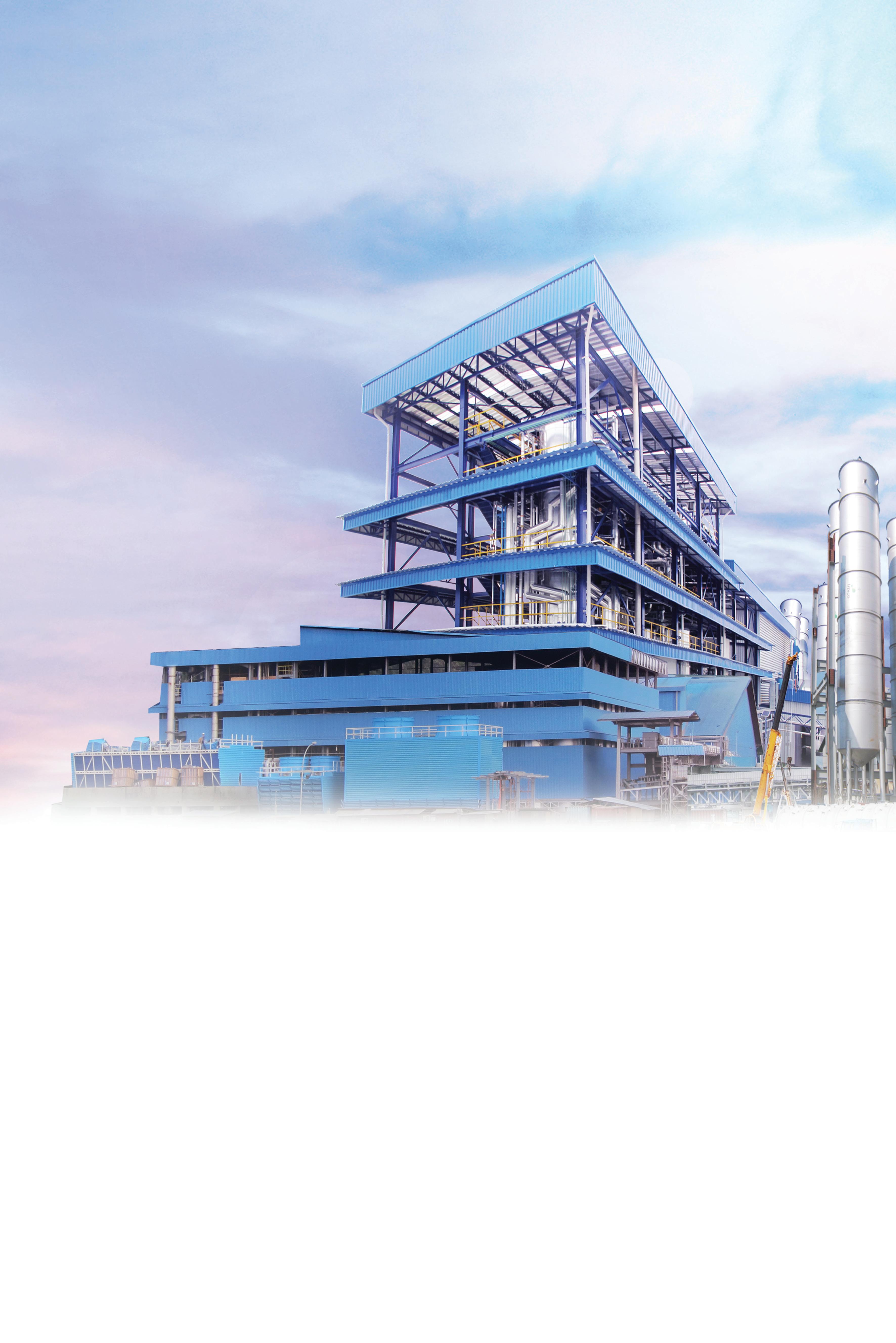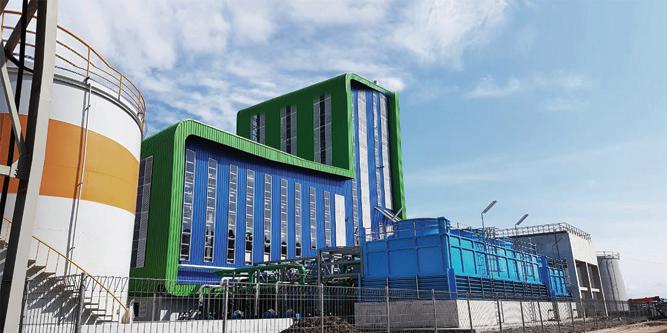
11 minute read
Photo: Adobe Stock
Despite the global COVID-19 pandemic, palm oil prices have rebounded. Will they remain high and what will 2021 production and demand look like? Serena Lim
The year 2020 has been a remarkable and volati le one for crude palm oil (CPO) prices, Dr Julian McGill, head of Southeast Asia at LMC Internati onal, told the Virtual POC2020 conference on 27-28 October.
Hovering around US$550/tonne in January 2019, the price drift ed slowly downwards for the next six months before rising rapidly due to more severe drought concerns in Indonesia, to hit a level of more than US$700/tonne in January 2020 (see Figure 2, p10). Then came COVID-19 lockdowns, leading to prices bott oming out in April 2020. Surprisingly, however, prices rebounded, reaching almost US$700/tonne in October.
CPO prices are on track to record their best year since 2017, added Ivy Ng, regional head of agribusiness research at CGS-CIMB.
“We have had a global pandemic that has disrupted everyone’s lives and aff ected many people’s livelihoods, and yet palm oil prices have remained immune to economic chaos,” McGill said. “The questi on is whether these high prices are justi fi ed, will we face a large price correcti on or will they persist?”


Global palm oil landscape
Palm oil accounts for 32% or some 75M tonnes of the 234.4M tonnes of oils and fats produced globally (see Figure 1, below right), said Ng. It also accounted for 57% or 54M tonnes of the 95.5M tonnes of oils and fats traded worldwide in 2019. Indonesia and Malaysia are the main global producers of palm oil, accounti ng for 58% (43M tonnes) and 26% (19M tonnes) of global producti on respecti vely in 2019. Indonesia was also responsible for 55% (29.7M tonnes), and Malaysia 34% (18.36M tonnes) of world palm oil exports in 2019.
Global demand is split into 70% for food (52.5M tonnes), 20% for biodiesel (15M tonnes) and 10% for oleochemical and other uses (7.5M tonnes).
Weather and rainfall
A key factor for the palm oil outlook is weather and rainfall, McGill said. Rainfall was around 60% below average levels between June-September 2019, with
Riding the price rollercoaster
immediate impacts on oil palms including and, therefore, less ferti liser applicati on, fresh fruit bunch (FFB) failure and reduced with an expected eff ect on later yields. yield and crude palm oil (CPO) output. However, a year later in June 2020,
“It was also clear that the severity of the fl oods arrived with rainfall at one point water defi cit would have a lagged impact 80% higher than normal, washing away on yields 12 months later with lower roads and creati ng logisti cal diffi culti es in moving CPO and FFBs to mills.Global palm oil landscape in 2019output from drought-strained trees.”
There were also lower prices in 2019 Indonesian producti on in 2020 fell by
Others 12% Thailand 4%
Malaysia 26%
Production
75.6m MT Indonesia 58% Guatemala 2% Others 9%
Malaysia 34%
Exports
54.0m MT Indonesia 55%
Indonesia (58%) + Malaysia (26%) = 84%
Others 52%
Imports
54.4m MT Indonesia (55%) + Malaysia (34%) = 89%
India 19%
EU 16%
China 13%
India (19%) + China (13%) + EU (16%) = 49%
Figure 1: Global palm oil landscape, 2019

5% compared to the previous year. had expanded, plantations had moved has declined,” McGill said. “This means Malaysia saw an output similar to further south into Kalimantan, south that in the future, Indonesia is going to 2019’s (see Figure 3, below). Sumatra and Papua, which were further rely more and more on yields to determine McGill said this was the first time away from the optimal equator area. output growth and we can’t expect to see
Indonesia had underperformed against Indonesia had also had the benefit of the year-on-year growth in the way we Malaysia. “We have become used to seeing The palm oil price rollercoasterquite large volumes of palm oil coming from new areas reaching maturity. have seen in the past.” Nonetheless, 2021 would see an
Indonesian output at a structurally higher “That growth has now slowed as improvement in palm oil production level than Malaysia.” Monthly Malaysian crude palm oil price, US$/tonne restrictions to new plantings and low because the La Niña weather pattern – However, as Indonesia’s palm oil industry prices have meant that expansion in area which brings higher rainfall – meant there would be no problems with insufficient rain.
Malaysian crude palm oil price (US$/tonne) 750
700
650
600
550
500
450
400 Jan-19 Apr-19 Jul-19 Oct-19 Jan-20 Apr-20 Jul-20 … has reduced palm oil output substantially Oct-20
BMD third position Year on year change in Malaysian and Indonesian palm oil production
Figure 2: Malaysian crude palm oil prices, Jan 2019-October 2020 (US$/tonne)
© 2020 LMC International. All rights reserved. 2020 in hindsight –are palm oil prices too high?
25%
Year on year change in output 20%
15%
10%
5%
0%
-5%
-10%
-15% 2001 2003 2005 2007 2009 2011 2013 2015 2017 2019 2. COVID-19 only reduced palm oil exports briefly
Indonesia
Malaysia Monthly exports of crude and refined palm oil from Indonesia and Malaysia by destination
Figure 3: Year-on-year change in Malaysian/Indonesian palm oil production
© 2020 LMC International. All rights reserved. 2020 in hindsight –are palm oil prices too high?
Indonesian and Malaysian exports of palm oil by destination (million tonnes) 2.5
2.0
1.5
1.0
0.5
0.0
Jan 18 Jul 18 Jan 19 Jul 19 Jan 20 Jul 20 7.5
6.0
4.5
3.0
1.5 Total palm oil exports (million tonnes)
0.0
World China, India and EU Rest of World
Source: McGill, LMC International, Virtual POC
2
Source: McGill, LMC International, Virtual POC
Source: McGill, LMC International, Virtual POC
COVID impact on production
Production of palm oil in both Malaysia and Indonesia has continued despite COVID-19 lockdowns last year.
Malaysia introduced movement control orders from 13 March-28 April but the palm oil industry was allowed to operate as it was considered an essential industry, Ng said. The Sabah state government ordered oil palm estates in up to six districts to suspend operations from 25 March-10 April, with around 75% of estates affected between 1-10 April, leading to an estimated 100,000 tonnes of production loss during the 10 days.
More recently, Sabah state was placed under a conditional movement control order from 13-26 October and Selangor, Putrajaya and Kuala Lumpur were also placed under conditional movement control orders from 14-27 October but there was no impact on fresh fruit bunch output (FFB) output as plantation activity was considered essential, Ng said.
However, Malaysian producers have been impacted by labour shortages due to a freeze in foreign worker permits.
In Indonesia, protocols such as temperature checks and movement controls were introduced to prevent the spread of COVID-19 among workers but there were no plans to reduce workers’ hours or activities.
4 Demand and exports
COVID-19 initially impacted palm oil demand due to lockdowns and the decline in eating out. However, palm oil exports only fell briefly, McGill said.
China, India and the EU were the main markets for palm oil, and exports to these three countries fell more dramatically, with India and China’s strict lockdowns and restaurant closures hitting palm oil use in frying and catering (see Figure 4, left).
India’s imports of palm oil products (RBD palm oil, CPO + CP olein + CPKO) fell to a low of 335,000 tonnes in March 2020 compared with 802,000 tonnes in March 2019 but rebounded to 734,000 tonnes in August 2020, Ng added.
However, consumption returned once
Choose reliability.

Visit oildri.com/purify to learn more about our quality products and services.
Consistency is key.
You can rely on Oil-Dri. With unrivaled customer service, dependable supply, and highly experienced technical service experts, our world-class team is tough to beat. We stay committed to enhancing your re nery processes each and every step of the way.
Our globally trusted bleaching earths for edible oils— Pure-Flo® , Supreme™ , and Perform® —are the industry’s reliable choice for performance in color reduction, metals removal, and ltration. Feel at ease with products you can trust.
(m tonnes) 100.0 10-year CAGR : 5.6%
80.0 60.0 40.0 20.0 37.7 42.6 45.2 46.4 47.9 52.4 57.8 59.5 60.9 62.6 65.3 71.5 77.6 10-year CAGR : 18.0% 1.4 2.3 3.4 4.1 4.9 7.0 9.0 10.1 8.6 10.7 11.1 14.3 17.7
2007 2008 2009 2010 2011 2012 2013 2014 2015 2016 2017 2018 2019
Total palm oil usage Palm oil used as biodiesel feedstock
14% 16%
4% 5% 21% 22% 22%
7% 9% 10% 28%
13% 32% 32%
16% 17% 29%
14% 31% 31%
17% 17% 35%
20% 39%
23%
2007 2008 2009 2010 2011 2012 2013 2014 2015 2016 2017 2018 2019
Palm oil's share of feedstock used for biodiesel Palm oil used in biodiesel as a % of total palm oil consumption
SOURCE: OIL WORLD, CGS-CIMB RESEARCH
Figure 5: Rising share of biodiesel in palm oil usage Global palm oil production prospects
32 Source: Oil World, CGS-CIMB, Ivy Ng, Virutal POC
80.0
70.0
60.0
50.0
40.0
30.0
20.0
10.0
63.1 59.5
1.2 2.4 3.9
2.1 1.4 2.5 4.1 1.8
33.5
32.4
68.3
1.6 2.6
4.8 2.6
36.8
74.3 75.7 74.7 77.4
1.3 1.3 1.3 2.7 2.7 2.7 5.0 5.1 5.2 2.8 3.1 3.0 1.4 2.8 5.3 3.1
43.0 43.7 43.0 45.0
20.0 17.3 19.9 19.5 19.8 19.5 19.8
2015 2016 2017 2018 2019 2020F 2021F
Malaysia Indonesia Thailand C&S America Africa Others
SOURCE: MPOB, OILWORLD, CGS-CIMB RESEARCH
Figure 6: Global palm oil production prospects (million tonnes)
Source: MPOB, Oil World, CGS-CIMB, Ivy Ng, Virutal POC
lockdowns were lifted and India and China also resumed imports in order to replenish stocks. India also started buying palm oil from Malaysia again in May after a four-month diplomatic row over Indian government policy on Muslims, McGill said.
“In addition, food use is not the only use for palm oil,” McGill said. “There is biodiesel as well.”
According to Ng, the use of palm oil in biodiesel as a percentage of total palm oil consumption has risen from 4% in 2007 to 23% in 2019 (see Figure 5, above).
“COVID-19 lockdowns dramatically reduced travel, resulting in much lower demand for jet fuel, gasoline and diesel,” said McGill. As biofuels were mostly blended with transport fuel, this reduced biofuel demand worldwide.
While jet fuel demand remained low, the fall in diesel demand was not so dramatic as the fuel was used in heavy goods vehicles which continued deliveries.
“In a surprising twist, the reduced availability of waste feedstocks (such as used cooking oil and animal fats) in the USA and EU meant that demand for vegetable oil methyl esters actually increased,” McGill said.
When looking at feedstocks for US biodiesel, for example, corn oil fell because it is a co-product of ethanol production, which also decreased.
The availability of yellow grease or used cooking oil (UCO) declined because people were not eating out as much.
Animal fat feedstock also declined due to COVID-19 outbreaks at slaughterhouses and meat packing plants.
“The remarkable impact has been that soyabean oil use in biodiesel has increased,” McGill said.
The situation in Europe was similar but more extreme because of the EU’s policy of double-counting waste biodiesel feedstocks. Because UCO became less available due to the fall in eating out, 1M tonne of UCO biodiesel feedstock needed to be replaced by 2M tonnes of vegetable oil, increasing demand for vegetable oil for biodiesel, and palm oil usage, McGill said.
12
Biodiesel effect
Another key factor in determining future palm oil demand will be the price spread between crude petroleum oil prices and vegetable oil prices.
With diesel prices down and CPO prices high, it becomes uneconomical to blend palm oil into biodiesel, according to Ng.
Indonesia expanded its biodiesel mandate to a 30% blend from 20% effective 1 January 2020.
“B30 could translate to an incremental demand of up to 2.5M tonnes for CPO, or 6% of Indonesia’s output. Something to watch out for is whether B30 can be sustained, as the CPO funds to support Indonesia’s biodiesel programme may not be sufficient due to the wider CPO premium over gas oil,” Ng said.
McGill added that Argentina and Brazil had already lowered their biodiesel mandates because they could not fund their biodiesel programmes at such high costs.
Future prospects
Despite the huge shock from COVID-19 on people’s eating habits and livelihoods, vegetable oil prices rallied from June 2020, said McGill.
“COVID-19 reduced palm oil demand, but only in China and India and during a period of relatively low CPO availability. Once the lockdowns eased, demand returned.”
The virus also led to lower diesel, and therefore, biodiesel usage but the use of vegetable oils in the USA and EU rose to compensate for the lower availability of waste feedstocks.
“Droughts in 2019 followed by floods in 2020 have meant lower Indonesian palm output while droughts in the Black Sea region have also limited sunflower and rapeseed production. The result of this has been to keep prices elevated.”
As for 2021, Ng expects Indonesian palm oil production to recover by 2-3M tonnes (see Figure 6, above left). “Overall, we project global palm oil supply will be lower by 1M tonnes in 2020 before recovering by 2.7M tonnes in 2021.”
A rebound in global GDP post COVID-19 and low stocks in consuming countries boded well for palm oil demand in 2021. Ng said demand was expected to drop by 2M tonnes in 2020 before growing by 3M tonnes in 2021.
A widening CPO price discount against other edible oils supported demand, with Chinese imports and Indonesian usage of palm oil for biodiesel being key factors to watch out for, she concluded. Serena Lim is the editor of OFI









